Remembering Zarina
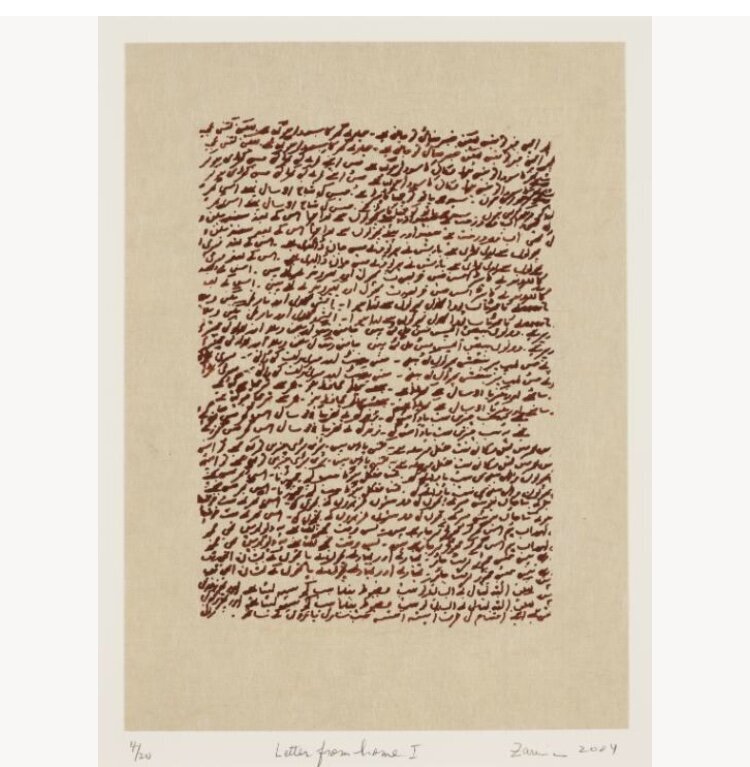
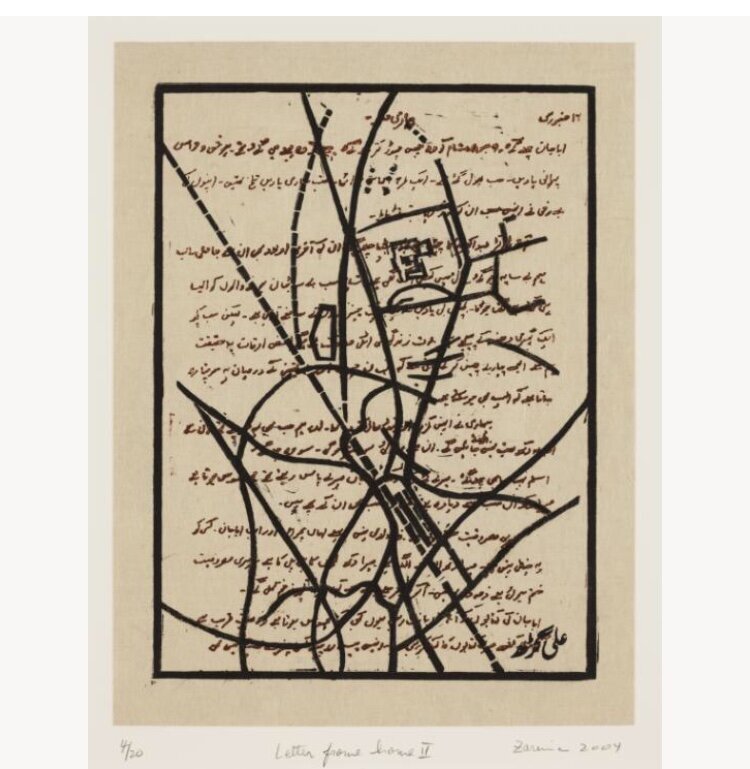
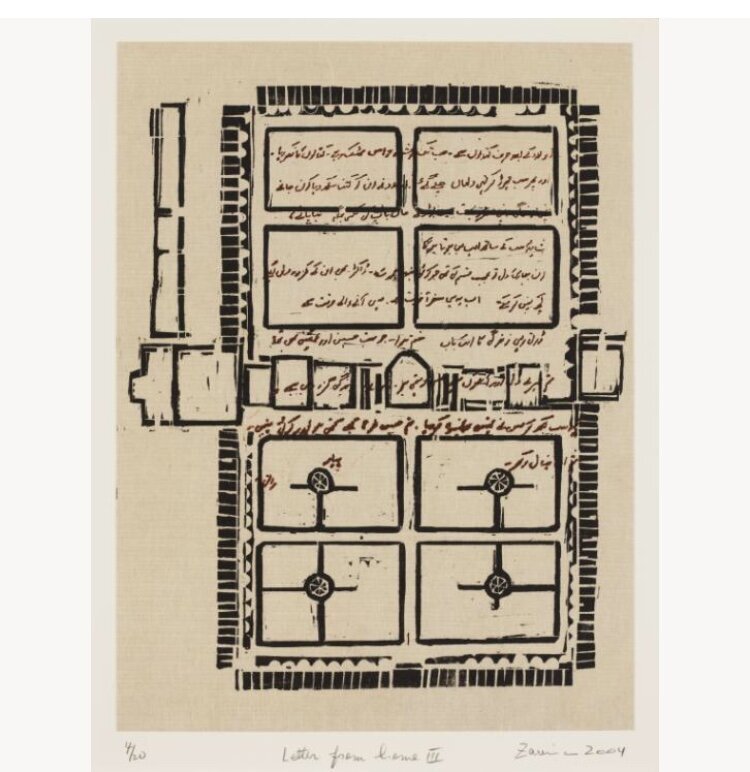
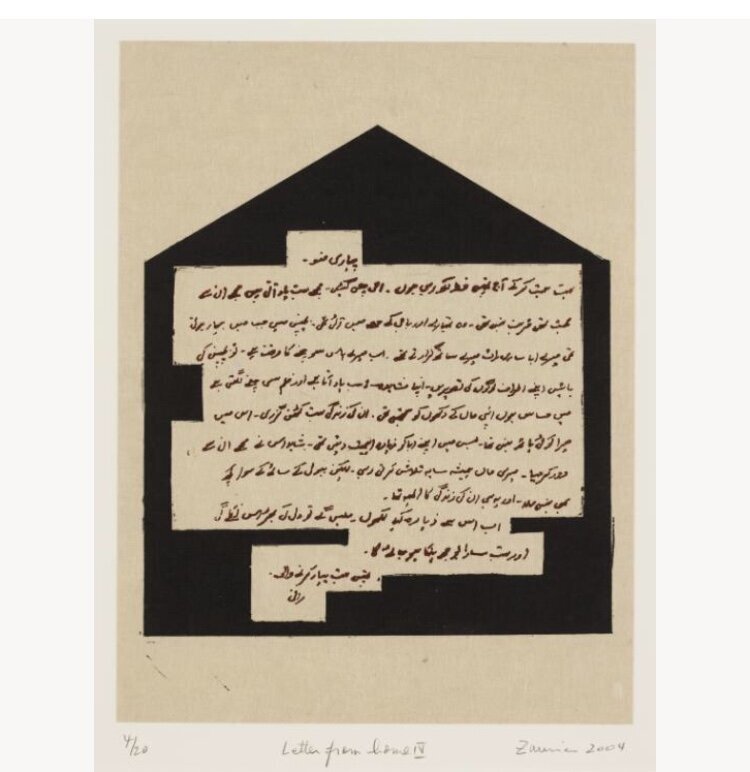
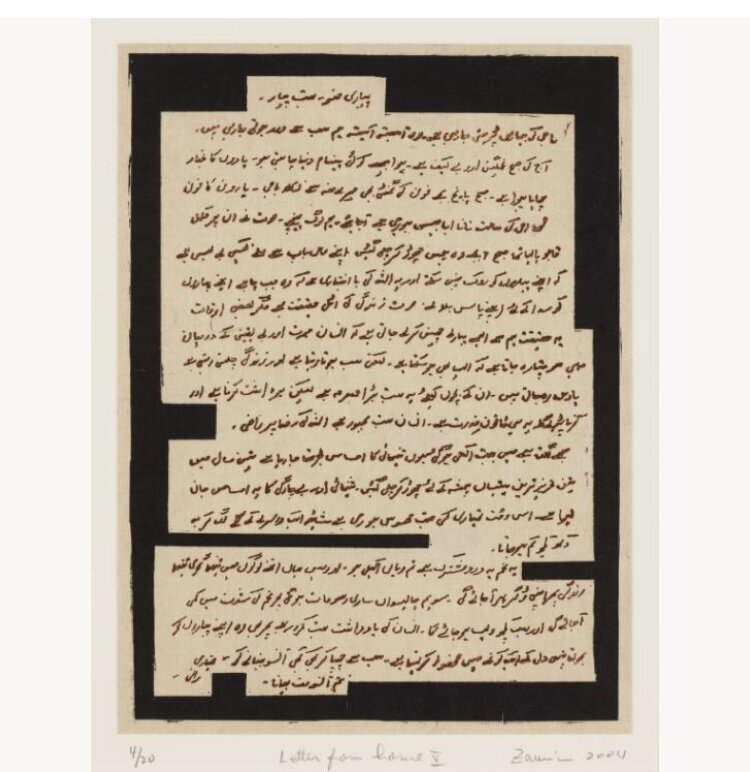
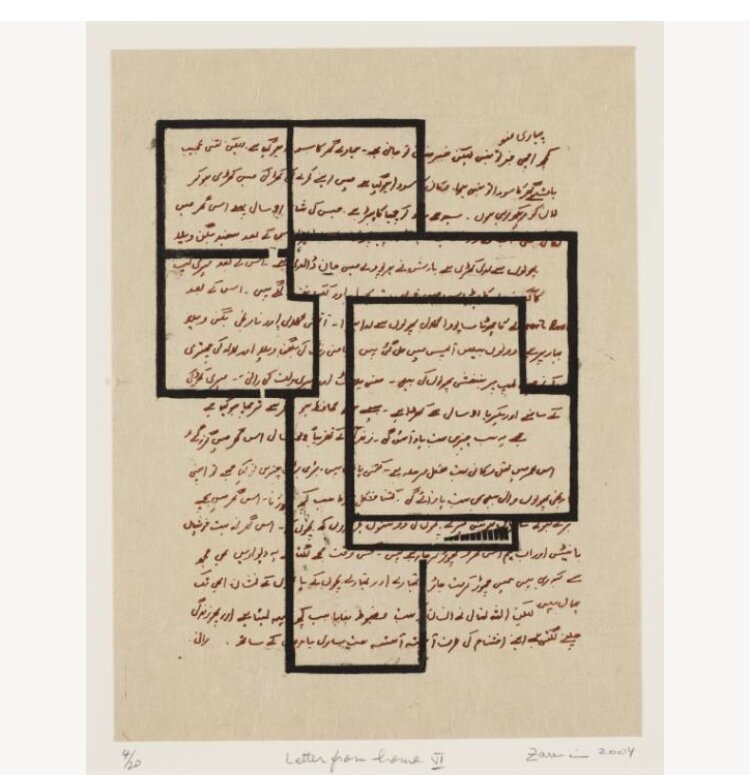
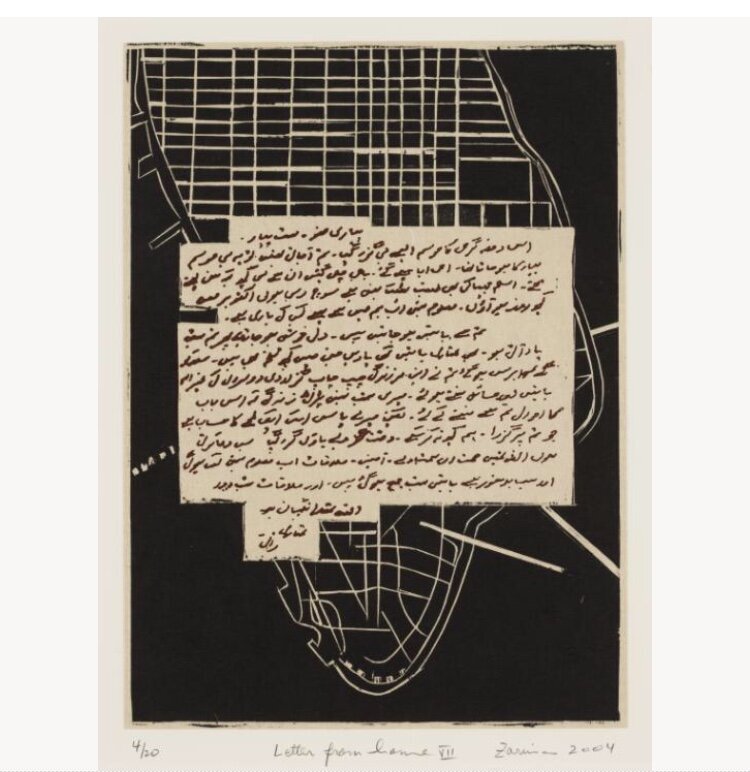

'Letters from Home', Zarina Hashmi, 2004 | Tate
We were saddened to hear of Zarina Hashmi's recent passing. Ranked among the finest printmakers of modern times, Zarina's work was informed by her unique perspective of having lived a life mostly in exile. Set adrift by the 1947 partition of India, she moved first to Pakistan with her family and later settled in New York City. Unsurprisingly, the violence of India's partition in all its myriad forms looms large in her work and is poignantly expressed through her ideas on language, culture, and separation.
Zarina was especially affected by her relationship with the Urdu language – it being as synonymous for 'home' for her as maps and houses, which also feature prominently in her work. She spoke candidly about the challenge posed by migration to preserving her culture and heritage: "The biggest loss for me is language. Specifically, poetry. Before I go to bed lately, thanks to YouTube, I listen to the recitation of poetry in Urdu. I jokingly say I have lived a life in translation.”
These works are from her 2013 'Letters from Home' exhibition at the Tate. They will undoubtedly strike a chord with anyone who has stumbled across such sweetly written letters amongst their own parents' or grandparents' possessions. Cherished correspondence sent with love and affection from far-off and much-missed mothers, fathers, and siblings; now carefully squirrelled away at the bottom of drawers and at the back of dressers. Though sadly now passed, her work stands as eloquent testimony to the feelings of loss, exile, and disconnect that migration causes. As well as to that endless quest for belonging – for a 'home'.
Zarina Hashmi (1937-2020)
